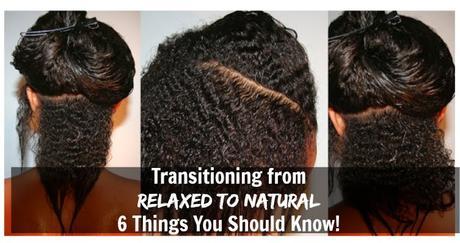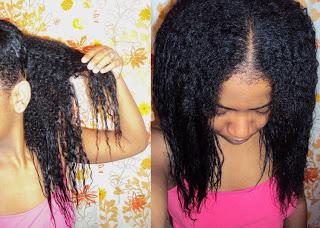
With there being so many resources available on natural hair care these days, a ton of not so helpful information about natural hair is also available. You'll find all type of ridiculous hair care tips like usingvaginal creams, ointments to treat athlete's foot and even breast milk (whose breast milk are they using anyway?) to promote hair growth. I've compiled a list of some basic steps to help the aspiring natural transition smoothly to healthy, strong natural hair.
1. Stand Firm in Your Reasons for Making the Transition
We all have our reasons for wanting to transition to natural hair. Whether it's because you're tired of using toxic chemicals in your hair, you love the beauty of natural hair or you're just experimenting-- know your reasons for wanting to transition and stand by it.Not everyone may be supportive of your decision, and if you are insecure about your decision you may be tempted to say, "to hell with this!" Natural hair care may be all new to you if you've been relaxing your hair for many years. Natural hair care is not a trend, it's more of a lifestyle and requires a completely new way of thinking when it comes to caring for your hair.
2. Take the Time to Develop a Basic, Healthy Hair Care Routine Sooner than Later
Start adopting a natural hair care routine that will strengthen your hair and scalp as your natural texture starts to grow in. When creating a natural hair care routine, it is a good idea to chose products that meet your hair's unique needs. Start by use a sulfate-free shampoo, which will cleanse the hair without stripping all of its natural moisture.Read Also: How to Create a Natural Hair Care Routine that Actually Works for Your Hair
Follow-up with a moisturizing conditioner targeted for dry hair. Detangle with a wide toothed comb and get in the routine of deep conditioning your hair monthly to restore luster, strengthen the hair follicle and retain moisture. A monthly protein treatment or henna treatment can also be used if needed.

Image Courtesy of TheBeatBrigade
3. Accept that Your Hair is Not Going to Look Like Anyone Else's
If you're planning on transitioning to natural hair, I'm betting that you've been researching YouTube videos, blog posts, Pinterest boards and other natural hair resources. You may have even coveted some of the gorgeous heads of natural hair and may have even gone as far as to wish that your hair texture comes out the same.That needs to stop. Understand that hair texture is unique to the structure of your DNA, so your hair texture will not look exactly like any other texture that you've seen. You must accept the fact that no matter what your hair texture, you can easily learn what works best for your hair and not someone else.
 4. Start Deep Conditioning Monthly
4. Start Deep Conditioning Monthly
Deep Conditioning your hair regularly will strengthen the hair follicle and add some much needed moisture back into your thirsty natural strands. Get into the habit of deep conditioning your hair at least once or twice times a month in order to restore luster, strengthen the hair follicle, and retain moisture. You could also make your own deep conditioner at home using ingredients found around your kitchen. This moisturizing avocado and banana deep conditioner works wonders on adding moisture to natural hair.
5. Eliminate Direct Heat Styling
As your new natural hair texture starts to grow, you may be tempted to grab your flat iron and straighten out the new growth to blend with your chemically processed ends. Don't. The most delicate part of your hair is the line where the new growth meets the relaxed hair (also called the demarcation line).Too much heat styling could actually cause massive breakage at this line. This will cause far more damage to your natural hair and will lengthen your transition process. Instead, try various transition styles such as twists, flat twist & twist-outs, buns, perm rod curls, flexi-rod curls or even Curlformers.
6. Don't Forget to Nourish Your Scalp
Your scalp is a part of your body's largest organ, which is the skin. If you cut or bruise your arm or leg it can and will heal. The same goes for your scalp and the key is to nurture your scalp to a healthy state to allow your natural hair to grow in healthy and strong.Read Also: 7 Reasons to Love Jojoba Oil for Natural Hair
Try using castor oil, coconut oil, tea tree oil (mixed with a carrier oil), or Rose Hips oil into your scalp weekly for optimal scalp health. Jojoba oil is also a great oil to use and is the only oil that is very similar to the hair's natural oil.
Photo Courtesy of Phrophro.com

